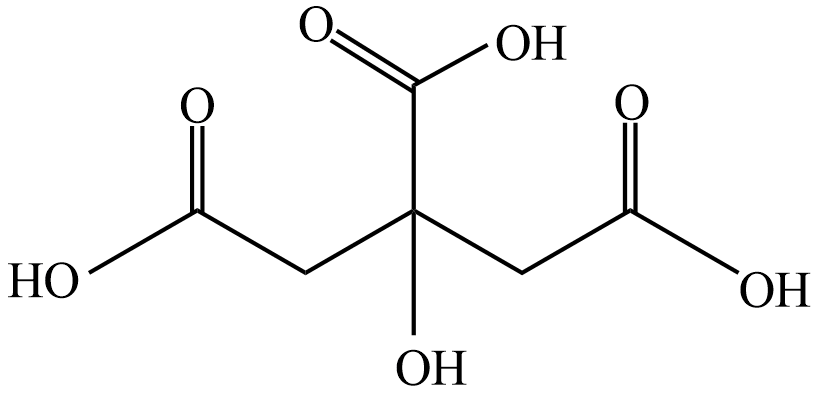
Is Citric acid Optically active?
Answer
493.2k+ views
Hint: For answering this question we should learn about Optical activity and Chirality of organic compounds. We will discuss both processes and structure of Citric acid in detail to decide whether it is optically active or not.
Complete answer:
Optical activity of an organic compound tells us about the property of organic compounds by which the organic compound rotates the plane-polarized light when it is passed through the solution of the organic compound. These compounds are called Optically active compounds.
Optical activity has two types
Dextrorotatory: It means rotation to the right. If the organic compound rotates the light to the right side or in clockwise direction it is known as dextrorotatory. It is represented by adding a $ ( + ) $ sign before the degree of rotation.
Laevorotatory: It means rotation to the left. If the organic compound rotates the plane polarised light to the left side or in anticlockwise direction it is known as laevorotatory. It is represented by adding a $ ( - ) $ sign before degree of rotation
Chirality
A structure which is asymmetric and non-superimposable over its mirror image is known as chiral or stereocenter. This property of compound is known as chirality.
Both above mentioned properties are required for a compound to be optically active.
Let' see the structure of Citric acid

From above structure we can see the Citric acid does not contain a chiral carbon and does not show any stereoisomerism so it is optically inactive.
Note:
Citric acid appears to be a colourless and odourless crystals with taste like an acid. It is denser than water. It is generally present in citrus fruits Oranges and lemons. Citrus acid is used as a food acidity regulator.
Complete answer:
Optical activity of an organic compound tells us about the property of organic compounds by which the organic compound rotates the plane-polarized light when it is passed through the solution of the organic compound. These compounds are called Optically active compounds.
Optical activity has two types
Dextrorotatory: It means rotation to the right. If the organic compound rotates the light to the right side or in clockwise direction it is known as dextrorotatory. It is represented by adding a $ ( + ) $ sign before the degree of rotation.
Laevorotatory: It means rotation to the left. If the organic compound rotates the plane polarised light to the left side or in anticlockwise direction it is known as laevorotatory. It is represented by adding a $ ( - ) $ sign before degree of rotation
Chirality
A structure which is asymmetric and non-superimposable over its mirror image is known as chiral or stereocenter. This property of compound is known as chirality.
Both above mentioned properties are required for a compound to be optically active.
Let' see the structure of Citric acid

From above structure we can see the Citric acid does not contain a chiral carbon and does not show any stereoisomerism so it is optically inactive.
Note:
Citric acid appears to be a colourless and odourless crystals with taste like an acid. It is denser than water. It is generally present in citrus fruits Oranges and lemons. Citrus acid is used as a food acidity regulator.
Recently Updated Pages
Why are manures considered better than fertilizers class 11 biology CBSE

Find the coordinates of the midpoint of the line segment class 11 maths CBSE

Distinguish between static friction limiting friction class 11 physics CBSE

The Chairman of the constituent Assembly was A Jawaharlal class 11 social science CBSE

The first National Commission on Labour NCL submitted class 11 social science CBSE

Number of all subshell of n + l 7 is A 4 B 5 C 6 D class 11 chemistry CBSE

Trending doubts
Differentiate between an exothermic and an endothermic class 11 chemistry CBSE

10 examples of friction in our daily life

One Metric ton is equal to kg A 10000 B 1000 C 100 class 11 physics CBSE

Difference Between Prokaryotic Cells and Eukaryotic Cells

State the laws of reflection of light

Explain zero factorial class 11 maths CBSE




